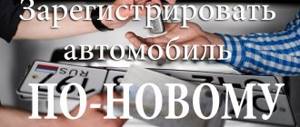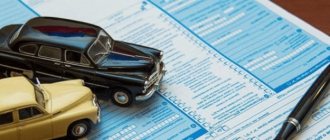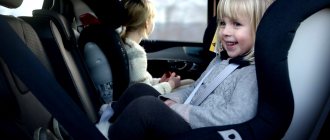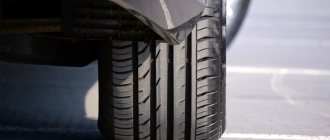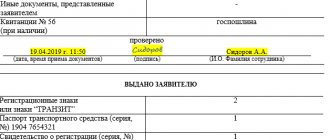electronic insurance policy
Electronic sales should solve the problem of availability of compulsory motor insurance in problem regions.
Electronic sales should solve the problem of availability of compulsory motor insurance in problem regions.
Let me remind you that when purchasing an electronic policy, you can choose either a regular printed form (they will send it to you by mail or offer to pick it up at the office) or an electronic version. In the latter case, you will be sent an MTPL policy number by email (like an electronic ticket for a plane or train).
Traffic police work in the field of view of video cameras
39. If possible, the employee’s implementation of administrative procedures during traffic supervision should be carried out in the field of view of video surveillance systems located in patrol vehicles and at stationary posts, or wearable video recorders.
The new regulations directly state that a traffic police officer must work within the field of view of video surveillance systems. This is necessary so that when conflict or ambiguous situations arise, it is possible to understand who is at fault.
In this case, it is possible to use video cameras installed:
- in a traffic police car;
- at the post;
- on the employee (wearable recorder).
Please note that in paragraph 39 there is the phrase “subject to availability”. So, unfortunately, it is not the police's responsibility to use video footage.
era-glonass
While new cars will be required to be equipped with the ERA-GLONASS system, this is not yet an available option for those in service.
While new cars will be required to be equipped with the ERA-GLONASS system, this is not yet an available option for those in service.
There is, perhaps, no doubt about the usefulness of the system itself. After all, in the event of an emergency on the road, the driver or passengers have the opportunity to contact the operator of the contact center of the ERA-GLONASS system via wireless communication channels and request assistance. In this case, geolocation data is automatically transmitted. But despite the fact that huge amounts of money have been invested in this system, I would not talk about complete readiness. For example, if you want to install the ERA-GLONASS device on your car yourself, you simply will not be able to connect it. As NP GLONASS (the system operator) explained to me, connecting private owners is virtually impossible for now.
Traffic rules changes from November 8, 2021
Decree of the Government of the Russian Federation dated October 26, 2017 No. 1300 “On Amendments to the Traffic Rules of the Russian Federation” established priority for the passage of roundabout intersections for vehicles located at them. It is clarified that when entering an intersection at which a roundabout is organized and which is marked with sign 4.3 “Roundabout Traffic,” the driver of a vehicle is obliged to give way to vehicles moving along such an intersection.
A corresponding amendment was made to paragraph 13.11 of the Traffic Rules, according to which at the intersection of equivalent roads the driver of a trackless vehicle is obliged to give way to vehicles approaching from the right.
Previously, it was provided that if in front of a roundabout there is a sign 4.3 in combination with a sign 2.4 “Give way” or 2.5 “Driving without stopping is prohibited”, the driver of a vehicle located at the intersection has priority over those entering such an intersection vehicles.
camera for photographing violations
Cameras should be installed on sections of roads with poor visibility, near schools, at intersections, as well as in places with a high concentration of violators, and in those areas where more than three accidents with casualties occurred during the year.
Cameras should be installed on sections of roads with poor visibility, near schools, at intersections, as well as in places with a high concentration of violators, and in those areas where more than three accidents with casualties occurred during the year.
Let me remind you that the Agency for Technical Regulation and Metrology has approved new GOSTs, according to which the speed measurement range should be 20–250 km/h, while the probability of license plate recognition, regardless of the time of day and weather, should be at least 90%. Photographs of the offender’s car must allow one to identify the distinctive features of the vehicle.
Be ready! Changes in traffic rules 2017 and more
What changes to the traffic rules came into effect in the summer (July) 2021?
Horizontal markings (lines, arrows, inscriptions and other markings on the roadway) establish certain modes and traffic order or contain other information for road users. Horizontal markings can be permanent or temporary. Permanent markings are white, except for lines 1.4, 1.10 and 1.17, yellow; temporary markings are orange. Horizontal markings: 1.1 - separates traffic flows in opposite directions and marks the boundaries of traffic lanes in dangerous places on the roads; indicates the boundaries of the roadway to which entry is prohibited; marks the boundaries of vehicle parking spaces; The marking numbering corresponds to GOST R 51256-2011. 1.2 - indicates the edge of the roadway;1.3 - separates traffic flows in opposite directions on roads with four or more lanes for traffic in both directions, with two or three lanes - with a lane width of more than 3.75 m; 1.4 - indicates places where stopping vehicles is prohibited;
1.5 - separates traffic flows in opposite directions on roads with two or three lanes; indicates the boundaries of traffic lanes when there are two or more lanes intended for traffic in the same direction; 1.6 - warns of approaching markings 1.1 or 1.11, which separate traffic flows in opposite or similar directions; 1.7 - indicates traffic lanes within the intersection; 1.8 - marks the boundary between the acceleration or deceleration lane and the main lane of the roadway;
1.9 - indicates the boundaries of the lanes on which reverse control is carried out; separates traffic flows of opposite directions (with reverse traffic lights turned off) on roads where reverse control is carried out; 1.10 - indicates places where parking of vehicles is prohibited;
1.11 - separates traffic flows of opposite or similar directions on road sections where changing lanes is allowed only from one lane; indicates places where it is necessary to allow movement only from the side of the broken line (at places of turn, entry and exit from the adjacent territory); 1.12 - indicates the place where the driver must stop in the presence of sign 2.5 or when there is a prohibiting traffic light signal (traffic controller); 1.13 - indicates the place where the driver must, if necessary, stop, giving way to vehicles moving along the road being crossed; 1.14.1, 1.14.2 - indicates a pedestrian crossing; marking arrows 1.14.2 indicate the direction of movement of pedestrians; 1.15 - indicates the place where the bicycle path crosses the roadway; 1.16.1 - denotes islands separating traffic flows in opposite directions; 1.16.2 - denotes islands separating traffic flows in one direction; 1.16.3 - denotes islands at the confluence of traffic flows; 1.17 - indicates the stopping places of route vehicles and taxi ranks; 1.18 - indicates the permitted lane directions at the intersection. Markings depicting a dead end are applied to indicate that turning onto the nearest roadway is prohibited; markings permitting a left turn from the leftmost lane also permit a U-turn;
1.19 - warns of approaching a narrowing of the roadway (a section where the number of lanes in a given direction is reduced) or marking lines 1.1 or 1.11 separating traffic flows in opposite directions;
1.20 - warns of approaching marking 1.13; 1.21 - warns of approaching marking 1.12 when it is used in combination with sign 2.5; 1.22 - indicates the road number; 1.23.1 - designates a special lane for route vehicles; 1.23.2 - designation of a pedestrian path or pedestrian part of a path intended for the joint movement of pedestrians and bicycles; 1.23.3 - designation of a bicycle path (part of a path) or lane;
1.24.1 - duplication of warning road signs; 1.24.2 - duplication of prohibitory road signs; 1.24.3 — duplication of the “Disabled Persons” road sign; 1.24.4 - duplication of the “Photo-video recording” road sign and (or) designation of sections of the road on which photo-video recording can be carried out; markup 1.24.4 can be used independently; 1.25 - designation of artificial unevenness according to GOST R 52605-2006 Lines 1.1, 1.2 and 1.3 are prohibited from crossing. Line 1.2 is allowed to be crossed to stop a vehicle on the side of the road and when leaving it in places where stopping or parking is permitted. Lines 1.5 - 1.8 can be crossed from any side. Line 1.9 in the absence of reversible traffic lights or when they are turned off is allowed to be crossed if it is located to the right of the driver; when reverse traffic lights are on - on any side, if it separates lanes on which traffic is allowed in one direction. When the reversing traffic lights are turned off, the driver must immediately change lanes to the right beyond marking line 1.9. Line 1.9, separating traffic flows in opposite directions, is prohibited from crossing when the reversible traffic lights are turned off. Line 1.11 is allowed to be crossed from the side of the broken line, as well as from the side of the solid line, but only upon completion of overtaking or detour. In cases where the meanings of road signs, including temporary ones, and horizontal marking lines contradict each other or the markings are not sufficiently distinguishable, drivers must be guided by the road signs. In cases where temporary marking lines and permanent marking lines contradict each other, drivers must be guided by the temporary marking lines.
Types of fines and their payment
The new law involves the following changes in the fine payment system:
- Drivers will now be able to pay only 50% of the entire fine amount indicated on the receipt. This opportunity can be used during the first twenty days from the moment of his discharge. But this discount does not apply to all articles of the law. Thus, there are no articles here that affect driving a car while drunk or on drugs, or repeated driving of a car (other vehicle) that has not passed transport registration. This discount does not apply to paying a fine for handing over a car to a person who was driving it while drunk. Articles 12.8, 12.26, 12.27 (part 3) have been excluded from the list.
- Those who drink and drive will be deprived of their driver's license for 3 years. The law also provides for a punishment of two years in prison. Such penalties also threaten motorists who do not want to undergo a medical examination again. Moreover, these types of punishments do not provide for the abolition of a fine, which motorists will have to pay without fail.
- The new rules will also affect the way of parking a car. Previously, drivers could park their car either parallel or at a ninety-degree angle. Now they will be able to park the car at an acute angle to the sidewalk. Experienced car enthusiasts say that a car parked in this way does not take up as much space; it becomes more compact, which makes it possible to accommodate more cars. A special “herringbone” sign will appear in places for such parking.

